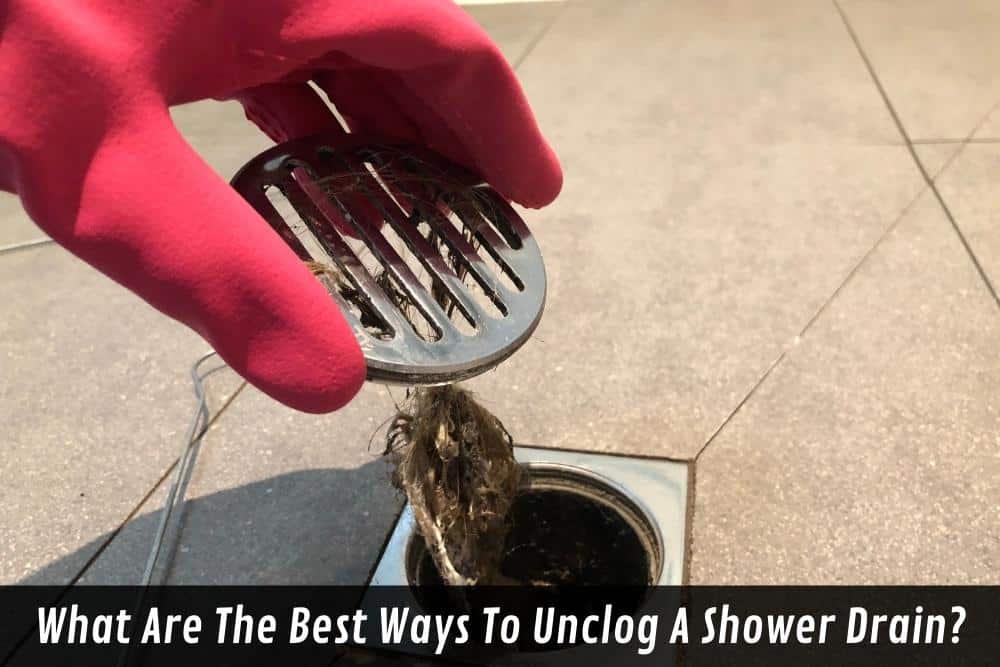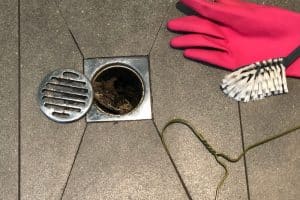If your shower drain is clogged, blocked drains can be a big headache to fix. Fortunately, there are several ways to unclog a shower drain, and most of them are relatively easy to do. In this blog post, we’ll discuss what are the best ways to unclog a shower drain. We’ll also provide tips on how to prevent your shower drain from becoming clogged in the first place. So read on for helpful advice on fixing your clogged shower drain!
What are the causes of unclogged shower drain?
Shower drains can become clogged for several reasons. The most common culprits are hair, soap scum, and dirt. Blocked shower drains can cause water to pool in your shower, making it difficult to bathe or even causing flooding in severe cases.
1. Blockage due to hair gel/hair wax
This problem occurs when hair gel/wax clogs the drain outlet. If you have long hair, use natural oils instead of using petroleum jelly and if you have short hair, don’t bother using any oils at all. Use only water and avoid greasy items like soap and shampoo.
2. Greasy food residue
If you keep eating oily foods like burgers, pizzas, fries etc. Then they get deposited at the bottom of the tub where they create a sticky layer of grease. To get rid of this grease and remove the blockage, pour some vinegar down and let it sit for 5 minutes before flushing it out with clean water. You should repeat this step every day until the sink drains without any blockages.
3. Buildup of soap scum
Soap scums start building up, especially in dark places such as bathroom corners where we often neglect cleaning after taking showers. Soap scums contain detergents and it takes time to dissolve. To solve this problem, first, pour hot tap water to dissolve the buildup. Once dissolved, pour the solution down the drain. Repeat this process every week to prevent buildups.
The best way to Unclog the shower drains
1. Use a Plunger
If your sink or toilet is clogged, one of the easiest things you can do to fix the problem is to use a plunger. Plungers are relatively inexpensive and can be found at most hardware stores. Be sure to buy a plunger that is the right size for your particular drain.
To use a plunger, start by filling the sink or bowl with enough water to cover the plunger cup. Place the plunger over the drain opening and make sure there is a tight seal. Pump the plunger up and down several times before pulling it off of the drain. If the water level has gone down, repeat the process until the drain is clear.
2. Pour baking soda and vinegar down the drain
If you’re dealing with a clogged drain, one of the simplest things you can do is pour a cup of baking soda and white vinegar down the drain. This home remedy has been used for generations to unclog drains and is very effective.
To use this method, simply mix equal parts baking soda and vinegar. Then, pour the mixture down the drain and let it sit for 15-20 minutes. After that, flush the drain with hot water to clear away any remaining residue.
This home remedy is safe for most types of drains, but you should avoid using it if your drain is made of aluminium or other sensitive materials. If you’re not sure whether this method is safe for your particular drain, it’s always best to err on the side of caution and call a professional plumber.
3. Use a snake to clear the clog
A drain plumber’s snake is a long, flexible wire that can be inserted into the drain to break up the clog. It’s important to use a drain snake correctly, or you could end up damaging your pipes. Here’s how to use a drain snake to clear a clog:
- First, remove any hair or soap buildup around the drain. This will give you a clear opening to work with.
- Insert the drain snake into the drain. Push it down until you feel resistance.
- Start twisting the drain snake. As you twist, the wire will break up the clog and push it down the drain.
- Continue twisting and pushing the drain snake until the clog is cleared.
4. Put a bucket under the shower head to catch the water and then remove the drain cover
If you have a blocked drain, one of the quickest and easiest ways to unblock it is to put a bucket under the shower head to catch the water and then remove the drain cover. This will allow you to access the blockage and clear it away quickly.
If the blockage is caused by hair or soap, then you can often simply remove it with your fingers or a wire coat hanger. If the blockage is more serious, you may need to use a cup of vinegar or baking soda down the drain.
In any case, once you have removed the blockage, be sure to run hot water down the drain for several minutes to flush away any remaining debris. This will help to prevent the problem from happening again.
5. Use a wet/dry vacuum cleaner
If you have a wet/dry vacuum cleaner, you can use it to unblock your drains. Just make sure that the hose is firmly connected to the vacuum cleaner and that the setting is wet. Put the hose into the drain and turn on the vacuum cleaner. The suction will help to break up any blockages and clear the drains. If you don’t have a wet/dry vacuum cleaner, you can still use a regular vacuum cleaner with a hose attachment. However, you won’t be able to use as much suction and it might not be as effective. Either way, it’s worth a try before you call a plumber.
If your drains are still blocked after trying these methods, then it’s time to call in a professional. Plumbers have special tools that they can use to clear even the most stubborn blockages. They will also be able to diagnose any underlying problems with your drains and make sure that they are working properly. If you have recurrent problems with blocked drains, it might be worth getting your plumbing checked by a professional to see if there is a more serious problem.



